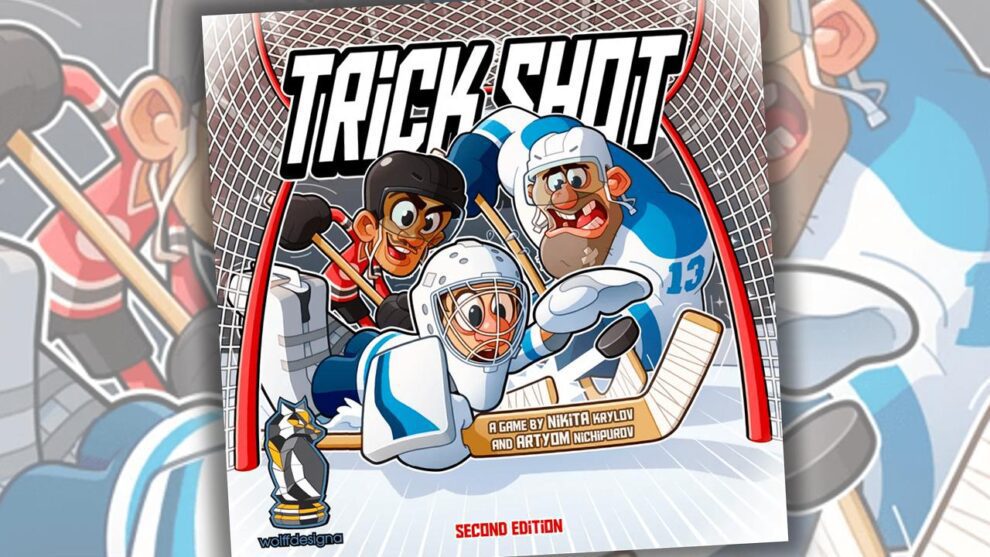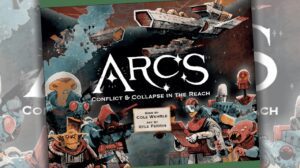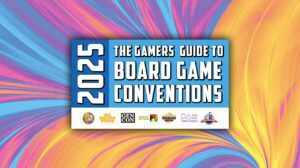Disclosure: Meeple Mountain received a free copy of this product in exchange for an honest, unbiased review. This review is not intended to be an endorsement.
What a curious beast this is.
Wolffdesigna’s Trick Shot has a reputation as the greatest hockey-themed board game out there. BGG lists 275 titles, so that’s not as hilariously specific a statement as it may read to most of us, myself included. Many of its fans argue that it is, in fact, the single greatest sports board game. I can see why. During those moments when everything clicks, when the puck is shooting back and forth and skaters are ramming into one another, when plays are coming together, you feel, no bones about it, like you are watching a game of hockey.
Trick Shot achieves much of this through simplicity. On your turn, you pick one of your players and have them move, pass the puck, or attempt to shoot a goal. Then, you roll a die. You have a five-in-six chance of success. If you fail, your turn ends. If you succeed, you pick a different player and have them move, pass the puck, or attempt to shoot a goal. Then, you roll two dice. You have a 25–in–36 chance of success. If you succeed, etc. You get the idea.
This is a push-your-luck game, which strikes me now as the perfect format for a sports theme. The emotional effect of rolling more and more dice and getting away with it is the closest I’ve seen a board game get to the pure elation of watching best-in-class athletes pull off an incredible play. The greatest sport plays have an arc to them, a build in tension followed by an inevitable release, for good or for ill, and Trick Shot replicates that with remarkable accuracy. I roll one die, then two, then three, then everything starts to feel like a miracle.
The decision to continue has a few complicating factors. The more actions you take, of course, the higher your chance of failure, but pushing your luck is baked into the design. Line Changes allow you to re-roll when you fail a success check, or, occasionally, if you get a particularly undesirable Reaction symbol. Reactions let your opponent shift one of their pieces a single space on the ice. That may not sound like much, but boy, let me tell you, the geometry in Trick Shots is brittle, and few things in my gaming life have ever elicited such a groan as an ill-timed Reaction. Every now and then, if you manage to get the puck into a good, isolated position, you look at the board and think, “You know what, I’m done for now,” and hand over the dice.
The stretches when Trick Shot is firing on all cylinders are divine, as good as games get, a perfect illustration of the power of imagination wedded to great design.
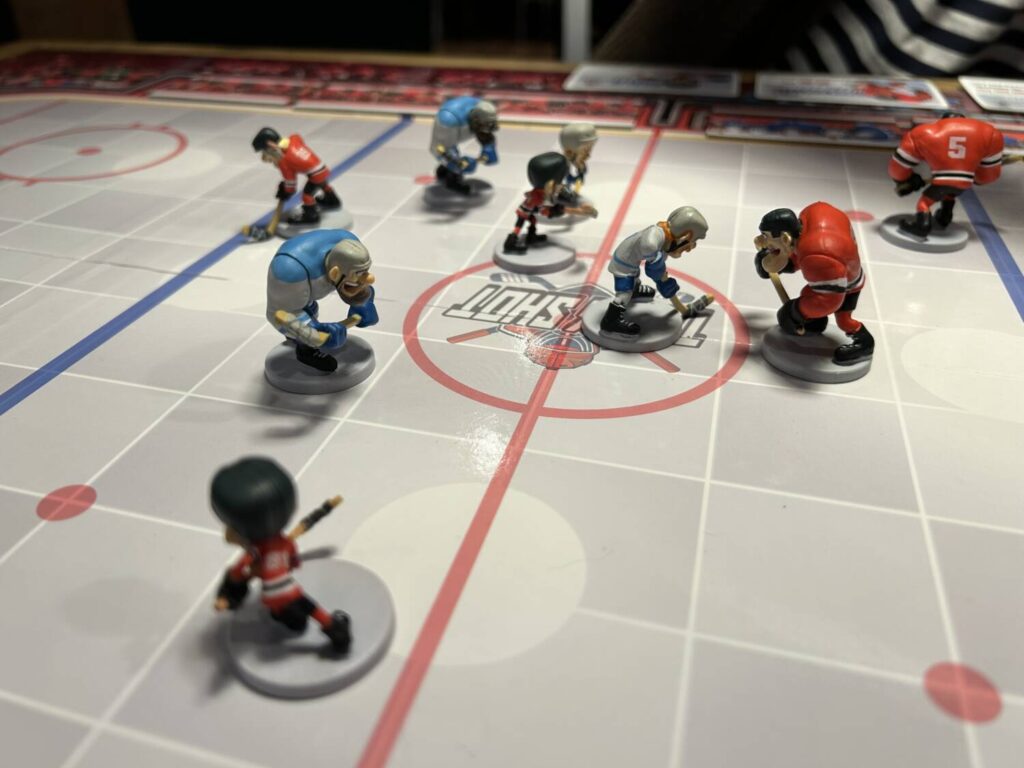
That Said
Then there are moments when you can’t get the puck out of a gnarl to save your life, none of the geometry wants to cooperate, the offsides rule seems cosmically unfair, and suddenly the whole thing grinds to a halt. The illusion melts away. You’re hunched over a board, trying to make sense of rules and systems that were artificially imposed on components manufactured in a far-away factory. These are the two far ends of the gamic experience, the extremes that define the hobby’s space. The best games occupy one end, and the very worst occupy the other. I’m not accustomed to a game managing to be both.
The rules I presented above are the broad strokes. Trick Shot occasionally gets bogged down in the details. The main bugbear relates to Checking: if the puck carrier is Checked, which means an opposing player is in any adjacent space, their action options are limited. They can’t move, and they can’t perform an Open Ice Pass, a type of pass in which the puck is hit up the ice in anticipation of another player. In my experience, the puck carrier is almost always checked. That slows things down considerably.
This does make the game more realistic, since the player with the puck often has a harder time moving freely around the rink. It also makes the game much more strategic, and surprisingly chessy. You have to really think about your player positioning, and the positioning of your opponent’s pieces. But it also transforms most turns into grinding attempts to break free, only to have a Reaction spoil everything.
I’ll put it this way: By the time you get the puck to a player who’s able to do anything with it, you’re probably already rolling five or six dice, and very likely to fail. Your opponent will be able to put you in check within one or two actions, so even if they have an early fail, you’re back to square one. This would all be fine if those gnarls were fun, but it really is a grind.
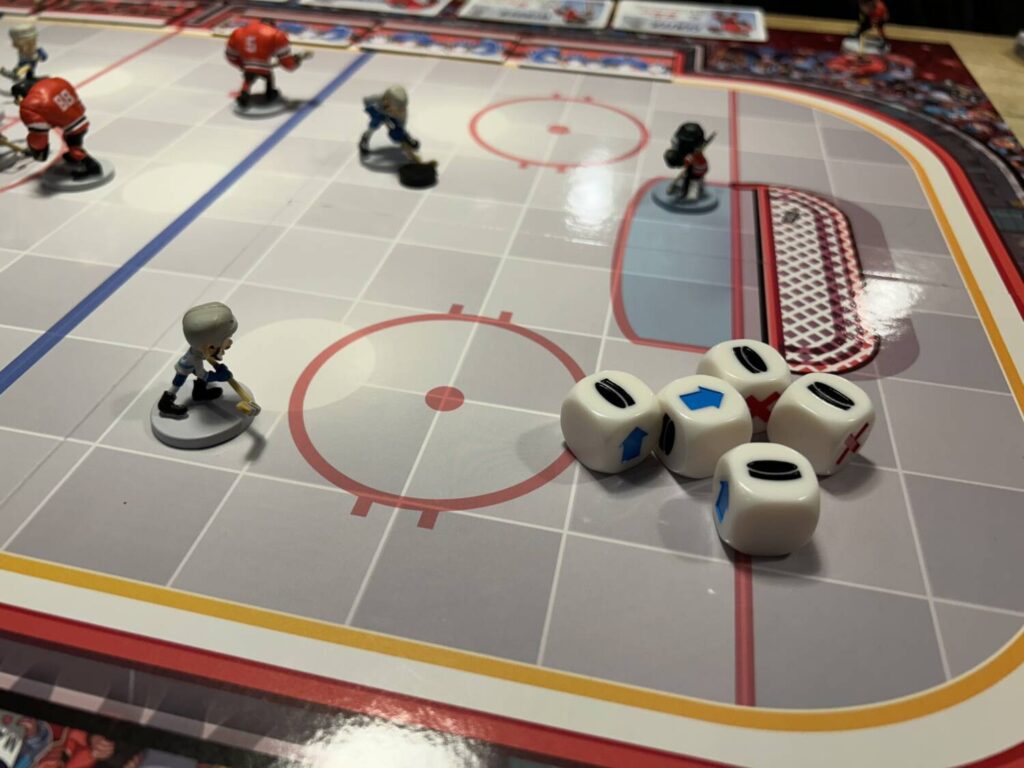
And Yet
Perhaps Trick Shot requires two players to dedicate time to become fluent in its motions and its logic, its tantalizing mix of chess-like forward thinking and Yahtzee-esque throws of the dice. I’ve stepped outside of my usual review groups to tackle this one, bringing in life-long hockey fans and Warhammer devotees. Across the board, they all love the highs, and can’t quite work out how to avoid the lows. “I want to watch two people who think they’re great at this game, play this game,” the Warhammer player said, “and see how they’re doing it differently.”
Trick Shot is a nut I can’t quite seem to crack. It offers glimpses of true magnificence, but I can’t find the means of making those glimpses last for longer. Game after game, Trick Shot suggests the promise that, any moment now, the ref is going to blow the whistle and the game is going to start, but it often feels too much like running stick drills.


